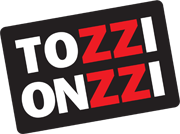This is because businesses credit interest owed and debit interest expenditure. Interest payable can include both billed and accrued interest, though (if material) accrued interest may appear in a separate “accrued interest liability” account on the balance sheet. Interest is considered to be payable irrespective of the status of the underlying debt as short-term debt or long-term debt. Short-term debt is payable within one year, and long-term debt is payable in more than one year. Because interest is a charge for borrowed funds (financial item), it is not recorded under the operating expenses part of the income statement. Instead, it’s frequently included in the “non-operating or other items column,” which comes after operating income.
Interest payable is the amount of interest the company has incurred but has not yet paid as of the date of the balance sheet. Interest Payable is also the title of the current liability account that is used to record and report this amount. Interest expense often appears as a line item on a company’s balance sheet since there are usually differences in timing between interest accrued and interest paid. If interest has been accrued but has not yet been paid, it would appear in the “current liabilities” section of the balance sheet. Conversely, if interest has been paid in advance, it would appear in the “current assets” section as a prepaid item.
REG Practice Questions Explained: Calculate Tax Amortization for Intangible Assets
For one month’s interest, multiply $500,000 by 15% and divide by 12 to get $6,250. As of December 31, 2017, determine the company’s interest expenditure and interest due. That would be the interest rate a lender charges when you borrow money from them. For the past 52 years, Harold Averkamp (CPA, MBA) has worked as an accounting supervisor, manager, consultant, university instructor, and innovator in teaching accounting online. He is the sole author of all the materials on AccountingCoach.com.
Higgins Woodwork Company borrowed $50,000 on January 4 to build a new industrial facility. This implies you’ll pay $112.50 monthly in interest on your friend’s debt. Divide the interest rate by the time once you have the interest rate decimal and time. For example, on January 1, 2017, FBK Company issued 12 percent bonds for $860,652 with a maturity value of $800,000. The bond has a 10% yield, matures on January 1, 2022, and pays interest on January 1 of each year. Whether the underlying debt is short-term or long-term, interest is deemed payable.
Heavily indebted companies may have a hard time serving their debt loads during economic downturns. At such times, investors and analysts pay particularly close attention to solvency ratios such as debt to equity and interest coverage. While mortgage interest is tax-deductible in the United States, it is not tax-deductible in Canada. The loan’s purpose is also critical in determining the tax-deductibility of interest expense.
To figure out how much interest you owe, first, figure out how much money you owe on your notes. The agreed-upon amount you expect to borrow is referred to as notes payable. The present value of the $75,000 due on December 31, 2019, is $56,349, which is the amount payable on the note. MS Excel or a financial calculator may compute the current value. For example, on January 1, 2016, FBK Company acquired a computer for $30,000 in cash and a $75,000 note due on January 1, 2019. The reverse of interest payable is interest receivable, which is the interest owed to the company by the entities to which it has lent money.
In that case, it shows that a corporation is defaulting on its debt commitments, and this amount may be a critical aspect of financial statement analysis. Interest expense is calculated based on the interest rate and the outstanding loan amount. To fulfill this demand, it issues a 6-month 15% note due on November what is mark to market accounting 1, 2020, and collects $500,000 in cash from the lender on the same day. Multiply your payable notes by your periodic interest rate to obtain it. For example, if you want to figure out how much interest you’ll have to pay on your new company loan over the following five months, you’d pick 12 as your bottom number.
Interest Payable
When the firm accrues $20,000 in interest after the first month, the company will debit $20,000 as interest expenditure and credit the same amount to the payable balance sheet. Short-term debt has a one-year payback period, whereas long-term debt has a more extended payback period. Only when the corporation uses the loan and incurs interest expense in the next month will the obligation exist. The corporation can, however, include the necessary information in the notes to its financial statements regarding this prospective obligation.
The 860,653 value indicates that this is a premium bond, with the premium amortized throughout the bond’s life. For example, a company with $100 million in debt at 8% interest has $8 million in annual interest expense. If annual EBIT is $80 million, then its interest coverage ratio is 10, which shows that the company can comfortably meet its obligations to pay interest.
- MS Excel or a financial calculator may compute the current value.
- Assuming the accrual method of accounting, interest expense is the amount of interest that was incurred on debt during a period of time.
- This amount tends to be relatively low, since it is usually paid to the lender on a monthly basis.
- The interest expenditure is calculated by multiplying the payable bond account by the interest rate.
- Second, interest expense is recorded in the accounting records with a debit, while interest payable is recorded with a credit.
Let’s assume PrintPal Corp. could only pay $300 of its interest expense for this month. The remaining $200 ($500 – $300) would be considered as Interest Payable. This amount would be carried over to the next month and is recorded as a liability on the balance sheet. Get instant access to lessons taught by experienced private equity pros and bulge bracket investment bankers including financial statement modeling, DCF, M&A, LBO, Comps and Excel Modeling. A tremendous cost, or an amount due but not yet paid as of the balance sheet recording date, is interest payable.
REG Practice Questions Explained: Calculate the Basis of Intangible Assets, Including Start-up Costs
The payable account would be zero after the interest expenditures are paid, and the corporation would credit the cash account with the amount paid as interest expense. The corporation would make the identical entry at the end of each quarter, and the total in the payable account would be $60,000. Interest payable is the amount of interest owed to lenders by a corporation as of the balance https://www.quick-bookkeeping.net/average-cost-method-formula-calculator/ sheet date. The firm would make the identical entry at the end of the second month, resulting in a balance of $40,000 in the interest payable account. Interest expenditure is a line item on a company’s revenue statement that shows the total interest it owes on loan. On the other hand, interest payment keeps track of how much money an organization owes in interest that it hasn’t paid.
The amount owed in interest is calculated over a specific period. The interest rate was 10% each year, and they had 20 days after each month’s conclusion to pay the interest charge. Assume Rocky Gloves Co. borrowed $500,000 from a bank to expand its business on August 1, 2017.
REG Practice Questions Explained: Calculate Tax Depreciation for Tangible Business Property Using MACRS
For example, if a loan is used for bona fide investment purposes, most jurisdictions would allow the interest expense for this loan to be deducted from taxes. So in this example, the Interest Expense for PrintPal Corp. for the month is $500, which shows the cost incurred due to the loan. However, since they only paid $300, there’s an Interest Payable of $200, which is the amount still owed and will need to be paid in the future. On April 30, 2021, Maria will return the principal amount of the loan plus interest at a rate of 15%, at which time the note payable will become due. Since the interest for the month is paid 20 days after the month ends, the interest that is not settled would be only in November when the balance sheet is completed (not December).

